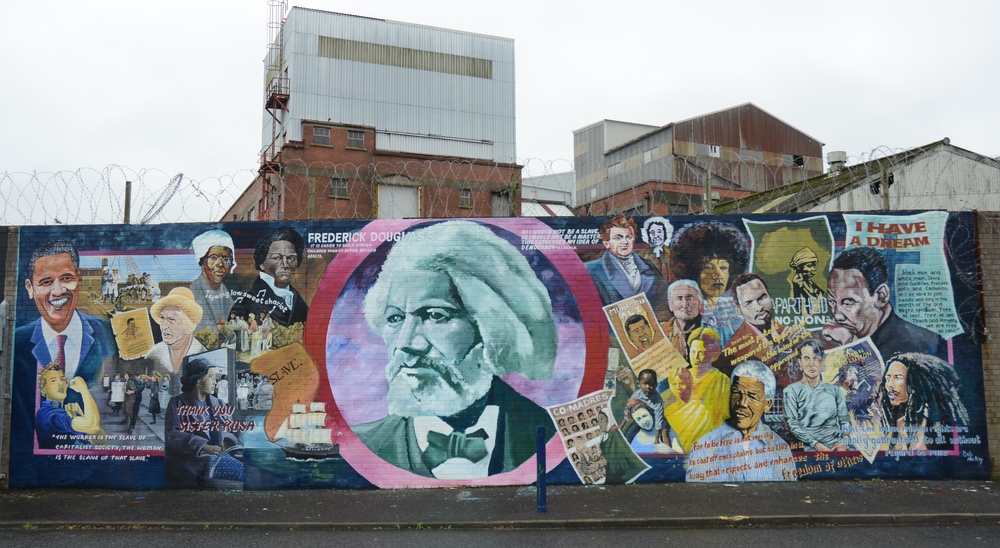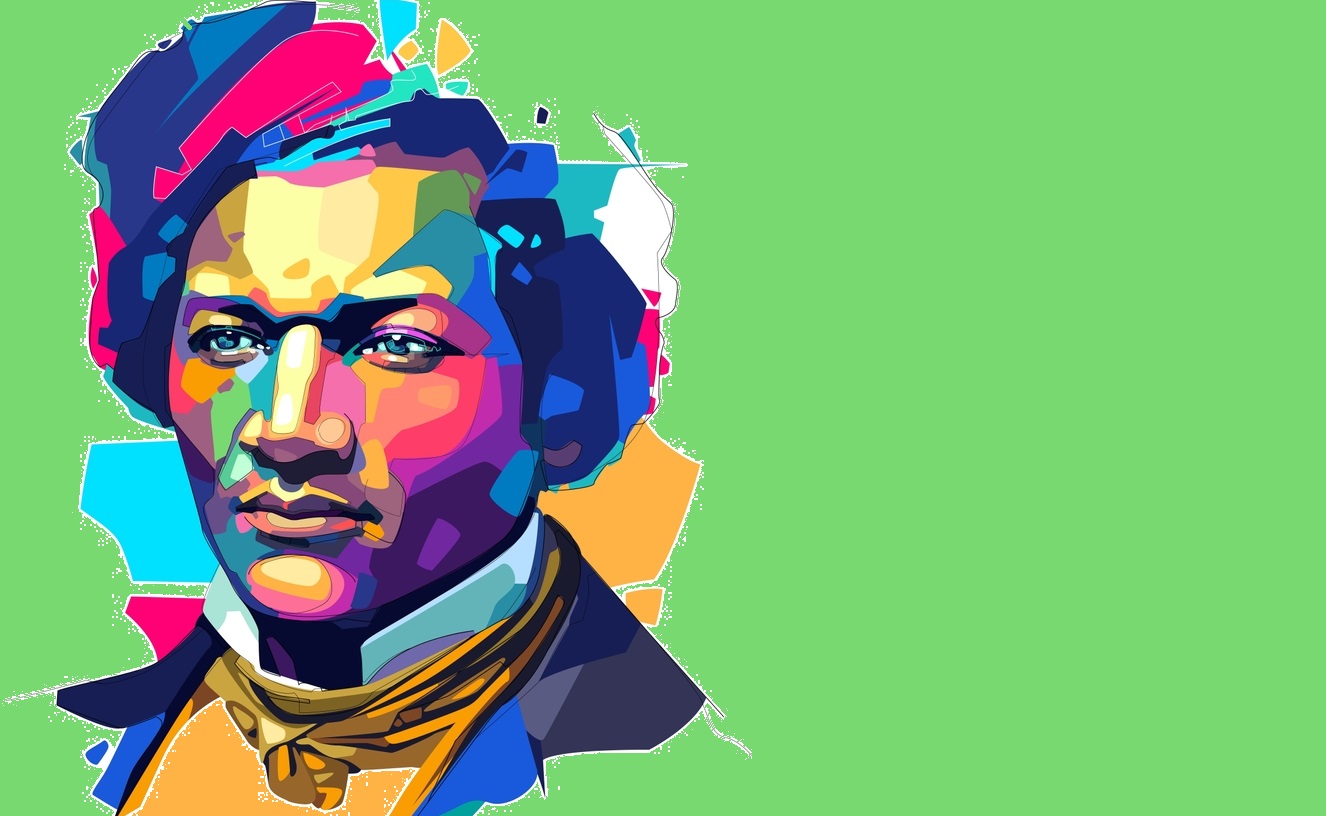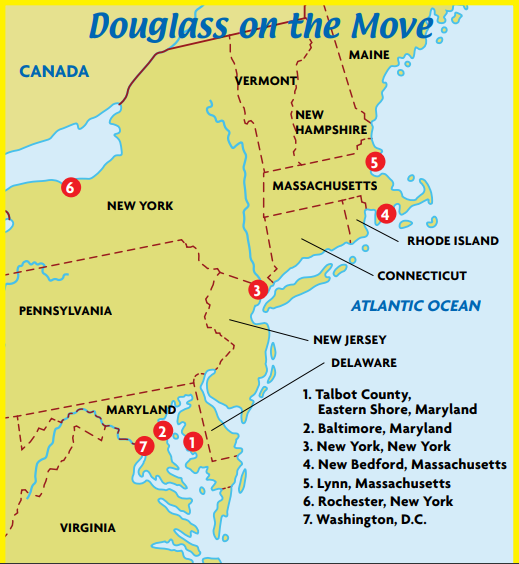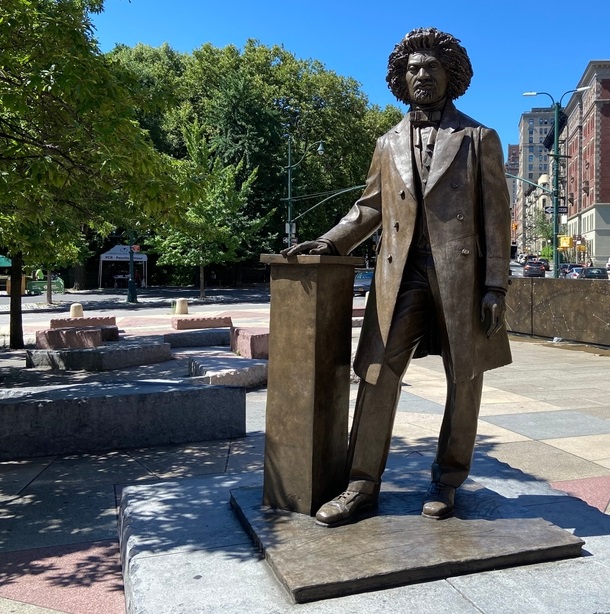February 2025 will mark the 207th or 208th birthday (more on that later) of the famous activist, orator, and author Frederick Douglass. The entire January issue of COBBLESTONE is devoted to his fascinating life and career and the impact he left on the nation. But how much do you really know about this iconic figure in American history? Here are some of our favorite facts from COBBLESTONE.
He wasn’t always called Frederick Douglass
He was born into slavery as Frederick Augustus Washington Bailey. For some time, he went by Frederick Johnson to avoid detection before choosing the name ‘Douglass’ from “The Lady of the Lake” by Sir Walter Scott.
He celebrated his birthday on a date with a sentimental meaning
Nobody is sure exactly when Frederick Douglass was born. While he concluded that he was likely born in February 1817, some records from his former enslaver indicate that he might have born in February 1818. Either way, his birthday is celebrated today on February 14. According to various stories, his mother called him her “little Valentine,” and on the day he last saw her, she gave him a small cake shaped like a heart. Although the precise date of his birth is unknown, Black History Month is celebrated every February in honor of both his and Abraham Lincoln’s birthdays.
He was forbidden from learning to read, so he taught himself
As a child, Douglass was enslaved by a man named Hugh Auld. Auld’s wife began to teach him to read, but Hugh forbade it, saying, “Learning will spoil . . .him to be a slave. If you teach him how to read, he’ll want to know how to write, and this accomplished, he’ll be running away himself.”
Unknown to Auld, it was this speech that made Douglass realize the value of education. It could be his ticket to freedom. Building on the little he’d learned from Mrs. Auld, he slowly taught himself to read and write and learned what he could from other children. Auld had no idea that the enslaved boy whose education he prevented would grow up to become a celebrated author.
He became determined to be free after defeating a notorious ‘slave-breaker.’
As a teenager and young man, Douglass was forced to work for several different households according to the whims of the Auld family. When he proved a defiant plantation worker, the Aulds decided to send him to a cruel and abusive farmer named Edward Covey who had a reputation for being a ‘slave-breaker.’ Covey infamously brutalized enslaved people in body and spirit until they became meek and compliant. This was not, however, the case for Douglass.
One day, when Covey tried to punish him, Douglass fought back and took him by the throat. Nobody answered the cruel man’s cries for help as Douglass threw him into the cow pen. He knew that Covey would not report him because it would mean admitting failure as a ‘slave-breaker.’ Douglass later wrote, “I was a changed being after that fight. I was nothing before; I was a man now. It inspired me with a renewed determination to be a free man.”
He escaped slavery disguised as a sailor, with the help of his wife
For some time, Douglass worked as a caulker at a shipyard in Baltimore. Because he was still enslaved, he barely got to keep any of his wages. Most of his pay went straight to the Auld family. But while working in Baltimore, he met and fell in love with a local free Black woman named Anna Murray. She helped provide him with some money and supplies he could use to escape slavery– including a sailor’s uniform. Douglass borrowed the papers of a free Black sailor and assumed his identity to take a train north to New York. He and Anna married just 11 days later.
Once he reached freedom, he assisted fellow fugitives along the ‘Underground Railroad’
The Douglass family ultimately settled in Rochester, New York, where they befriended fellow activist, Susan B. Anthony. Both the Anthony home and Douglass home became stations on the ‘Underground Railroad,’ where enslaved people escaping to freedom could come for shelter and assistance. The Douglasses installed a secret passage to conceal fugitives and provided them with food and assistance. Escaping slavery was extremely dangerous, with so-called ‘Fugitive Slave Laws’ proscribing harsh punishments for those who were caught. In the 1850s, it also became a federal crime to aid escaped enslaved people. Douglass and his wife risked a lot to help others to freedom, but Douglass was determined to give the same aid to others that he had received.

He found support overseas in Great Britain and Ireland
Publishing his best-selling autobiography, The Narrative of the Life of Frederick Douglass, made him a massive celebrity. But it also made him a target. In his book, he named the Auld family as his former enslavers. Douglass had never been formally freed and was still technically a fugitive all those years later. He and his friends worried that the Aulds might try to claim their ‘property’ back. So in the wake of his newfound fame– the book went through nine printings in the first three years alone– Douglass traveled throughout Great Britain and Ireland to give a series of lectures. While there, he befriended the prominent Irish politician and abolitionist Daniel O’Connell.
In 1846, a pair of British friends named Ellen and Anna Richardson gave Douglass a gift that would change his future: they helped raised funds to purchase his freedom from the Auld family. He could legally return to the United States as a free man.
He was an advocate for women’s rights… and (sort of) became a Vice Presidential candidate
In addition to campaigning for abolition and voting rights for Black men, Frederick Douglass was an avid proponent of women’s suffrage. Many of his suffragist friends, like Susan B. Anthony and Elizabeth Cady Stanton, did not support the 15th Amendment because it did not grant voting rights to women, but Douglass saw it as a first step that women’s suffrage would later follow. As soon as the 15th Amendment was ratified, Douglass began to campaign for a new amendment that would extend the same rights to women. In fact, when the Equal Rights party nominated Victoria Woodhull as their candidate for President of the United States (despite not being allowed to vote), they chose Douglass to be her running mate.
There was just one small problem: he never actually knew about or consented to the nomination. He had other fires to fight– literally. His house had burned down and dealing with the aftermath captured his attention at the time. Still, he became the first Black man nominated to the Vice Presidency. When he died, obituaries described him as a “Friend and champion of women.”
He was the most photographed American of the 19th century
You heard it right. More than Abraham Lincoln, Ulysses S. Grant, and George Custer. Over 160 separate photographs exist from his lifetime. He saw dignified, well-composed photographs as an antidote to the offensively exaggerated cartoons of Black Americans that often represented them in the media.
His second marriage created controversy
Anna Murray Douglass died in 1882, having shared 44 years of marriage and five children with Frederick Douglass. Douglass fell into a deep depression for over a year before finding love again with the literal girl next door, Helen Pitts. A college-educated suffragist and former teacher, she’d moved to DC to stay with her uncle. His next door neighbor? The Lion of Anacostia himself, Frederick Douglass! Both their families and strangers disapproved of the marriage, and not just because Helen was twenty years Douglass’ junior. She was also white. Douglass simply said, “This proves I am impartial. My first wife was the color of my mother and the second, the color of my father. Helen and Douglass remained married for 11 years until his sudden death. She spent the rest of her life commemorating his legacy and raising funds for their home to be preserved as a National Historic Site.
Abraham Lincoln’s widow sent Douglass a special memento
As he became an increasingly prominent voice for abolition, Douglass caught the notice of President Abraham Lincoln. The two leaders collaborated on ideas to encourage Black men to fight for the Union and to help free enslaved people from Confederate territory. When President Lincoln was elected to a second term, Douglass arrived unannounced at his inaugural reception. While White House officials tried to turn him away, Lincoln himself soon appeared, greeting him with, “Here comes my friend Douglass!”
After his assassination a mere month later, Douglass received a touching gift from Lincoln’s widow: the President’s own walking stick. He kept it for the rest of his life.
Frederick Douglass lifted weights every morning
COBBLESTONE’s interview with Kevin Bryant, a National Parks ranger at the Frederick Douglass National Historic Site in DC sheds light on an interesting artifact found in the home: a set of weights. Douglass lifted weights every morning, well into his 70’s. According to Bryant, it wasn’t just for health. It was for self-preservation. Douglass faced multiple physical attacks throughout his life and knew that he needed to stay strong for his own self-defense.
He’s been honored with at least a dozen statues, two memorial bridges, an airport, a postage stamp, a National Historic site, and even a special U.S. quarter
If you want to visit a monument or historic site dedicated to Douglass, you have quite a few to choose from. Many of his commemorative statues can be found in Maryland, where he was born, and the District of Columbia, where he died. There are also quite a few memorials to Douglass in Rochester, New York, where he lived longer than any other home during his lifetime. His Cedar Hill home in the Anacostia area of D.C. has been designated the Frederick Douglass National Historic Site and is open for visits. There’s also a prominent Frederick Douglass Memorial in Central Park in New York City. Have you seen any of these monuments?






